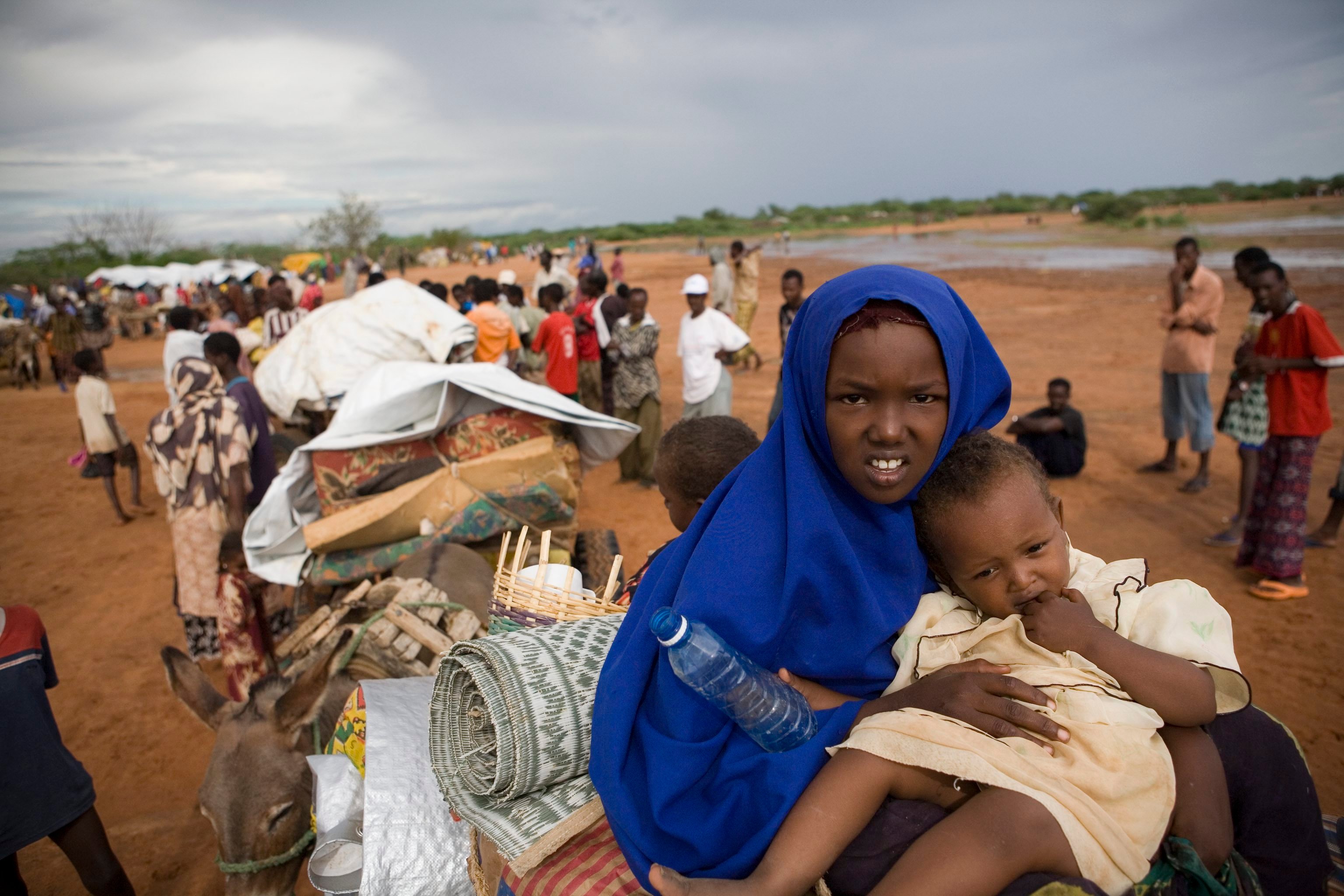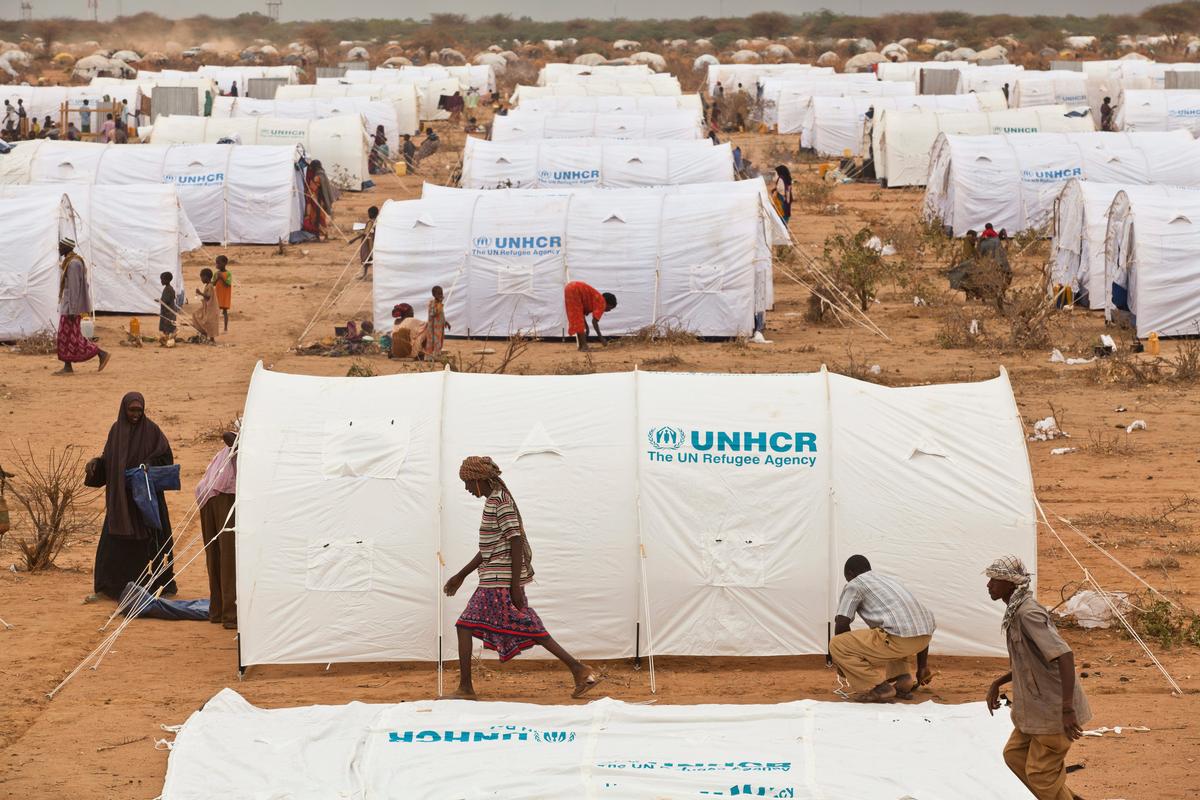Dadaab - World's biggest refugee camp 20 years old
Dadaab - World's biggest refugee camp 20 years old

GENEVA, 21 February (UNHCR) - This year is the 20th anniversary of the world's biggest refugee camp, Dadaab in north-eastern Kenya.
UNHCR, which manages the Dadaab complex, set up the first camps there between October 1991 and June 1992. This followed a civil war in Somalia that in 1991 had culminated in the fall of Mogadishu and overthrow of the central government.
"The original intention was for the three Dadaab camps to host up to 90,000 people," said UNHCR spokesman Andrej Mahecic. "However today they host more than 463,000 refugees, including some 10,000 third-generation refugees born in Dadaab to refugee parents who were also born there."
During last year's famine in Somalia, arrival rates frequently exceeded 1,000 people a day. Around 30,000 arrived in June, 40,000 in July and 38,000 in August. This has placed additional strain on existing resources. Together with the local authorities and humanitarian agencies, UNHCR managed to address the influx by establishing reception centres and rapid response assistance for new arrivals.
"That Dadaab has been able to provide refuge for so many years and to so many people is thanks first and foremost to the Government and people of Kenya," the UNHCR spokesman said.
UNHCR, together with the Government of Kenya and working with other aid agencies has provided protection, shelter and humanitarian assistance, often under difficult and complex circumstances. Chronic overcrowding, risk of disease, and seasonal floods are among the challenges.
"On the occasion of this anniversary UNHCR is renewing its appeal to the international community to ensure continued support to the approximately 1 million Somali refugees in the region, and to Kenya and the other countries that are hosting them," Mahecic said.
A third of this refugee population left Somalia in 2011 in the face of crippling conditions of drought, famine, and violence.
The 20 years that have passed since the camps opened also underline the need for peace in Somalia, an end to the violence there, and the possibility of refugees being able to return home.
"UNHCR hopes that deliberations during the London Somalia Conference, which starts on February 23, will act as a catalyst for a permanent solution to the perennial issue of the Somali situation - something that UNHCR has long pressed for," the UNHCR spokesman said.
Currently, the situation at Dadaab is extremely challenging. The kidnapping of three aid workers last autumn and more recently, the killing of two refugee leaders and several Kenyan policemen, as well as threats against humanitarian staff have forced UNHCR and its partners to rethink the way that aid is delivered.
Since October and until recently, there were security restrictions on movement around the camp. However, life-saving assistance such as the provision of food, water and health care never stopped and has always been UNHCR's priority. In addition, schools run mostly by refugee teachers have been open and managed to conduct Kenyan national exams at the end of 2011 despite the insecure environment.
Since the end of last year, humanitarian actors have looked at various ways to resume activities, using different methodologies and most importantly, shifting more responsibilities to the refugee communities.
As such, the crisis also presents an opportunity to more actively empower refugees to manage the day-to-day aspects of camp life. This includes the engagement of youth in providing informal education to new arrivals in Kambioos, water committees coordinating and ensuring sufficient water per household, refugee reporters publishing their own newspaper, and women forming groups for livelihood opportunities for mothers.
Services in the areas of health, water and sanitation have also been scaled up. On a typical day, some 1,800 refugees now get outpatient treatment in hospitals and health posts in the camps. Service provision in Kambioos has also improved. However, UNHCR is still seeing new measles cases (11 in the last week) and is focusing on vaccinating all new arrivals over 30 years of age.
UNHCR teams are involved in protection and community-services work including carrying out regular protection monitoring and livelihoods projects. Refugee teachers are receiving training on child-centred approaches, classroom management and psycho-social support. Activities focused on youth, women and refugees with disabilities are running again.
Earlier this month, UNHCR also resumed the relocation of refugees from the less secure outskirts of Dagahaley camp to Ifo 2 camp, where they receive family tents and basic assistance and services. Some 2,000 refugees have been moved so far, with another 3,500 set to join them in the coming weeks. By the end of the exercise, the entire camp of Ifo 2, with a capacity for 80,000 people, will be filled.
More than 968,000 Somalis live as refugees in countries neighbouring Somalia primarily in Kenya (520,000), Yemen (203,000) and Ethiopia (186,000). A third of them fled Somalia in the course of 2011. Another 1.3 million people are internally displaced within Somalia.







